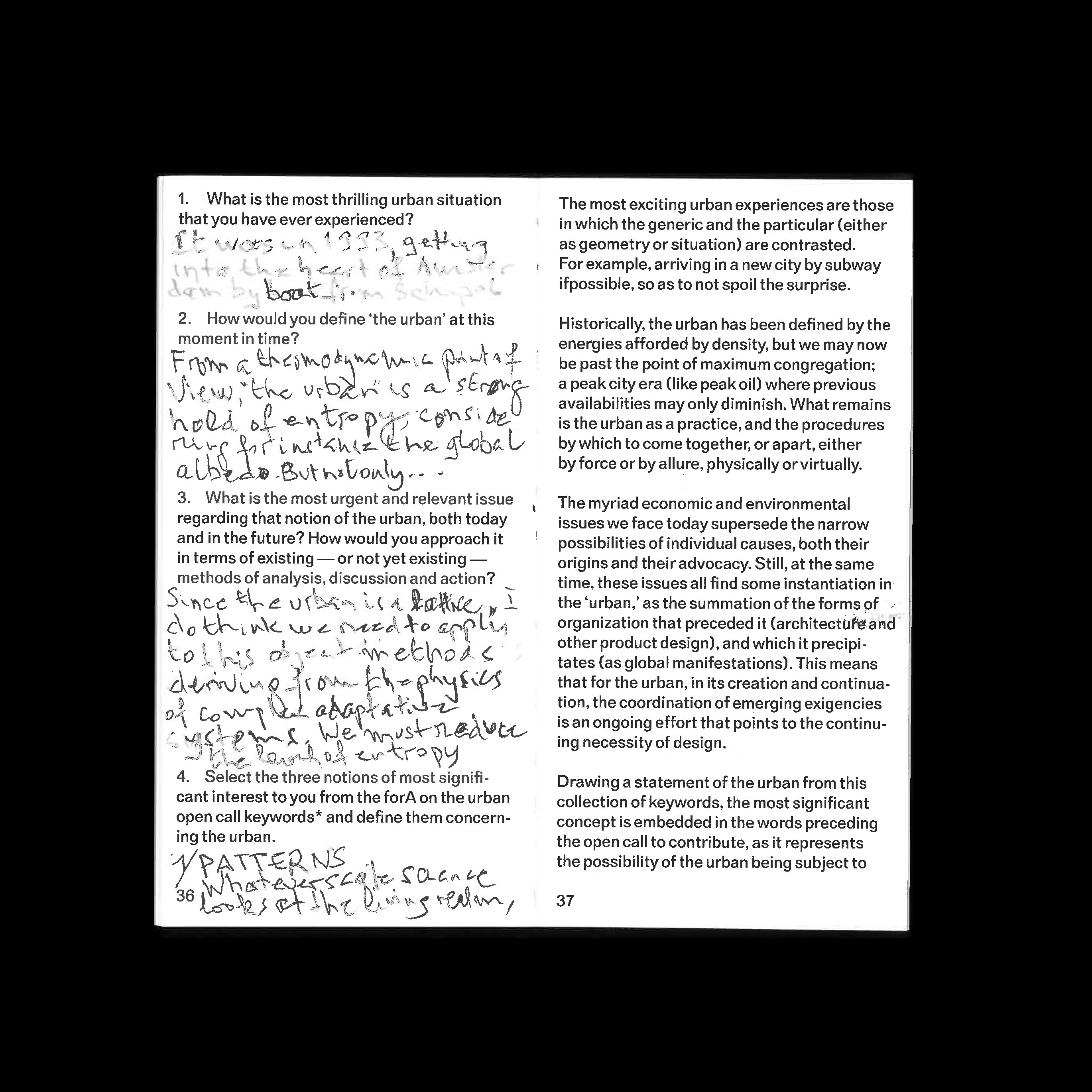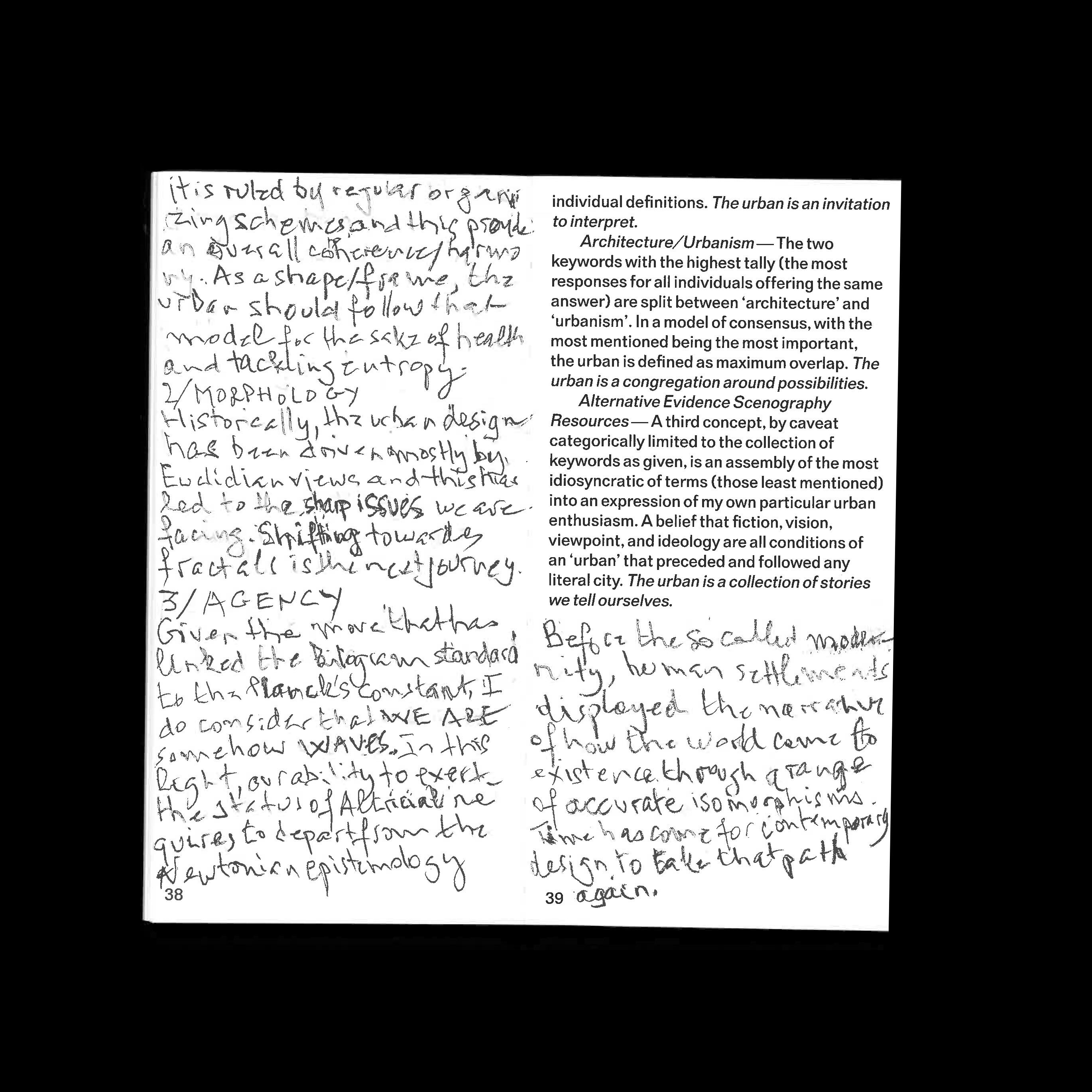“Since the urban is a lattice, I do think we need to apply to this object methods deriving from the physics of complex adaptive systems. We must reduce the level of entropy.”
—Lionel Manga



Annotations is an ongoing project initiated by the editors of forA on the Urban which seeks to extend and deepen the ideas and discussion that emerged in issue #0. New and previous contributors to the journal are invited to reflect on the subjects of the publication by engaging directly with the printed object, whether by writing in the margins of the page or transforming the journal into something else entirely. Annotations is meant literally: that is, issue #0 becomes a working document (and surface) for collecting reflections and thoughts. In doing so it allows the conversation on the urban to move in new and surprising directions.
Lionel Manga lives in Cameroon and is the author of “L’Ivresse du papillon” (2008), an essay that journeys through the local and contemporary visual arts scene. He is a regular contributor on various subjects to a number of magazines.